Groupie Accidentally Sleeps with Bass Player
LOUISVILLE, KY – The day after The Academy concert, Victoria Jorgensen, 22, was terrified to realize that she had accidentally slept with the band’s bass player – mistaking him for someone important in the band.
“I can’t believe how stupid I was,” said Jorgensen. “I mean, I went up to the guy and was like ‘are you in the band’ and he was all like, ‘yeah, I’m in the band’ so I did him. Then this morning I was telling my friends and I realized he was just the bass player. This happens to me all the time.”
Jorgensen plans to do more research before sleeping with another band member. “This won’t happen again,” said Jorgensen. “If I’m going to sleep with someone, they’d better be important. I mean, I could find someone here in town as important as a bass player.” Adam Siska, The Academy bass player, was unavailable for comment.
Bass players are the Rodney Dangerfields of the rock world, it seems. I tell ya, they just don’t get no respect. And no wonder! On the day after God created rock stars (sometime around 4 am on a gin-soaked Saturday night in Memphis), he created groupies. And he commanded them: “Thou shalt honor thy singer and thy lead guitarist and have no false rock Gods before thee.”
Meaning, pants-on-fire frontmen and swaggering lead guitarists with cigarettes dangling from their lips get their pick of the chicks. Drummers may not get a lion’s share of booty, but most people can at least name one or two of rock’s most famous beat-keepers.
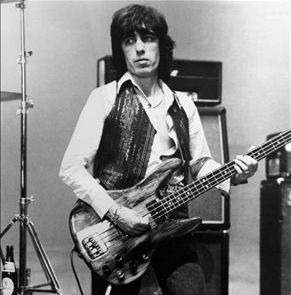 But who really knows or cares about the lowly bassist, standing stone-faced and static in the shadows? Heck, there are over a dozen websites devoted to bass player putdowns. (Q: What do you call someone who hangs around with musicians? A: A bass player.) There’s even a Facebook page called “Bass Player Jokes.” (Go ahead, it’s okay to LIKE it.) Are bass players really just one rung up the ladder from roadies when it comes to getting laid?
But who really knows or cares about the lowly bassist, standing stone-faced and static in the shadows? Heck, there are over a dozen websites devoted to bass player putdowns. (Q: What do you call someone who hangs around with musicians? A: A bass player.) There’s even a Facebook page called “Bass Player Jokes.” (Go ahead, it’s okay to LIKE it.) Are bass players really just one rung up the ladder from roadies when it comes to getting laid?
Okay, bassists Paul McCartney (understandably) and KISS reptile Gene Simmons (inconceivably) were highly desired by the types of rock nymphs who haunted hotel hallways and paid roadies in blowjobs for the chance to be smuggled into backstage dressing rooms. But there is one bass player whose sexual adventures far outnumbered Paul’s, Gene’s, and nearly everyone else’s back in the trailblazing days of cocksure rock gods. Yes, one man whose insatiable appetite for women shatters all myths of the ain’t gettin’ any bassist. And that man is Bill Wyman, the dark, diminutive musician who played with the Rolling Stones from 1962 through 1993.
In 2006, Maxim estimated that Wyman bedded 1,000 woman during his career, placing him at number 10 on the magazine’s list of Sex Legends. Only two other rock stars made the list: Motorhead frontman Lemmy Kilmister, at number 8 with 1,200 women, and Simmons, at number 3 with 4,600 conquests. (As a historical footnote, a Venetian hotel porter named Umberto Billo tops the list with 8,000, giving room service a whole new meaning.) And Elvis is, of course, in a class by himself.
Many suggest that Maxim greatly underestimated Bill Wyman’s prowess. It’s actually rumored that he had sex with more than 2,000 women during his tenure with the Stones, sometimes partaking of two or three fans per night over a 31-year period.
In his 1990 memoir, Stone Alone, the poker-faced Wyman presents the following scenario from the Stones’ touring days: “Brian [Jones] and I liked to share [hotel rooms] because we were on the prowl all day long and every night, chatting up girls in shops, girls backstage, reporters interviewing us, fan-club secretaries. In 1965 we sat down one evening in a hotel and worked out that since the band had started two years earlier, I’d had 278 girls, Brian 130, Mick about 30, Keith 6 and Charlie none. People always assume that Mick, particularly, was very active sexually, but that wasn’t so in the sixties.” (Keith Richards has frequently joked about Bill’s accountant-like obsession with tallying tail.)
By Wyman’s own accounts, he started his womanizing ways shortly after marrying his first wife and fathering a son, feeling no sense of guilt because the marriage was “a failure.”
 In a 2006 interview with Simon Hattenstone of The Guardian, Wyman describes a favorite pick-up process: “Me and Brian used to look out of the windows, cos we shared a suite, and we would ask the night porter to go out and get the one in the striped thing and the one in the shorts next to her, and they’d come up, and you’d spend a couple of hours with them and say bye and give ’em a kiss, and then about half an hour later you’d say, ‘That one in the red dress.'”
In a 2006 interview with Simon Hattenstone of The Guardian, Wyman describes a favorite pick-up process: “Me and Brian used to look out of the windows, cos we shared a suite, and we would ask the night porter to go out and get the one in the striped thing and the one in the shorts next to her, and they’d come up, and you’d spend a couple of hours with them and say bye and give ’em a kiss, and then about half an hour later you’d say, ‘That one in the red dress.'”
The shameless shagaholic goes on: “They [the girls] helped get over the boring times. And it became habitual…It was better than drugs because you couldn’t OD on it. If you’d had enough your body didn’t work any more, and it was as simple as that. So I thought it was quite healthy.”
But despite the old in-and-out routine, Bill Wyman did attempt to settle down — with a girl he started dating when she was 13 and he was 47. In 1989 he married Mandy Smith, with her mother’s consent, when she hit the ripe old age of 18. They were divorced 2 years later. At about the same time, Bill’s son Stephen was having a fling with Mandy’s mother! Oh, the one-night stands are so much less complicated.
So, there you have it. One bass player has scored with enough women to make up for the thousands who are ridiculed as nothing more than sexless pieces of rhythm machinery. Bill Wyman is an inspiration. He’s a legend. He’s alive and kicking at 79. And we’re grateful he had access to good antibiotics.
Here’s an interesting clip of Bill on a British TV show. Check out his Mick imitation:
By Dana Spiardi, October 24, 2012
]]>
Rod, the one-time king of the British Mods, looks fab, as usual. But I always loved Beck’s style, too — despite that shoe-polish black-cat hair that he was STILL sporting at age 70 when I saw him several months ago at the Palace Theater in Greensburg, PA.
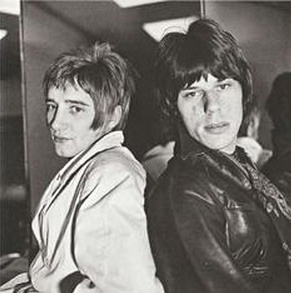 The “Truth” LP turned 45 years old in 2013. At that time Rod told Billboard magazine that he had “a brainwave” of an idea for a tour that would unite the blokes from his early ’70s band Faces with those of the Jeff Beck group. (Current Rolling Stone Ronnie Wood played in both those bands, by the way.)
The “Truth” LP turned 45 years old in 2013. At that time Rod told Billboard magazine that he had “a brainwave” of an idea for a tour that would unite the blokes from his early ’70s band Faces with those of the Jeff Beck group. (Current Rolling Stone Ronnie Wood played in both those bands, by the way.)
But, reality kicked in. Rod said, “Whether Jeff would want to do it, there’s two chances — slim and none…We were going to do a blues album, a modern sort of “Beck-Ola” (the group’s second LP) maybe, but we couldn’t agree on a great many things. I sent him a Christmas card, or e-mailed him a Christmas card, the year before last and never heard anything back.”
Not returning a Christmas greeting! So ungentlemanly, Jeff!
Beck has long been famous within the music world for his explosive temper. Rod summed it up this way: “When Jeff’s angry at you, he stays angry for a long time.”
Here’s a kind introduction from Rod. “I Ain’t Superstitious” was first recorded by Howlin’ Wolf in 1961.
Here’s the original Jeff Beck version from the “Truth” LP. “Rolling Stone” lists it at #86 on their list of the 100 greatest guitar songs of all time. The magazine said, “At every break, Beck’s aqueous wah-wah tone makes his instrument sound like it’s talking.” The song was used in the soundtrack of Martin Scorsese’s film “Casino.” You’ve just got to give this a listen.
© Dana Spiardi, Oct 28, 2015
]]>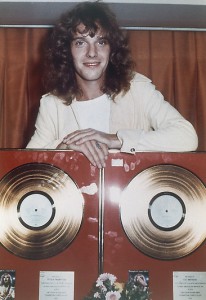 By the middle of that festive bicentennial summer, nearly every rock fan I knew had a copy of “Frampton Comes Alive,” the two-record set released by the very pretty British singer/guitarist/songwriter. It reached the #1 spot on the U.S. charts on April 10, 1976, and ended up being the biggest LP of the year, selling over 6 million copies and remaining on the American charts for 97 weeks! It was the biggest selling live album of all time until Bruce Springsteen’s 40-track “Live” box set came along in 1986. And get this: we only paid $7.98 for 78 minutes of music – quite a deal in those days, when the price of a standard album was about $6.98. And here’s a history lesson for those of you unlucky enough to be born in the post-vinyl era: like most double LPs in those days, sides 1 and 4 were on one disc, and sides 2 and 3 were on the other. We “stacked” the LPs onto our auto-drop record players, and were able to hear two sides in sequence! How’s that for high-tech?
By the middle of that festive bicentennial summer, nearly every rock fan I knew had a copy of “Frampton Comes Alive,” the two-record set released by the very pretty British singer/guitarist/songwriter. It reached the #1 spot on the U.S. charts on April 10, 1976, and ended up being the biggest LP of the year, selling over 6 million copies and remaining on the American charts for 97 weeks! It was the biggest selling live album of all time until Bruce Springsteen’s 40-track “Live” box set came along in 1986. And get this: we only paid $7.98 for 78 minutes of music – quite a deal in those days, when the price of a standard album was about $6.98. And here’s a history lesson for those of you unlucky enough to be born in the post-vinyl era: like most double LPs in those days, sides 1 and 4 were on one disc, and sides 2 and 3 were on the other. We “stacked” the LPs onto our auto-drop record players, and were able to hear two sides in sequence! How’s that for high-tech?
Several of the songs on “Frampton Comes Alive” feature distinctive sounds produced by the use of a talk box, a unit that allows a musician to control the tone of an instrument with a tube inserted in his or her mouth. In Frampton’s case, he used it to modify the sound of his guitar to make it sound like it was talking. Listen to the bridge in “Show Me the Way,” and you’ll recognize it instantly. Or, check out the long instrumental segment in the middle of “Do You Feel Like We Do,” the album’s closing song; Frampton’s guitar sounds like it’s saying, “I want to f..k you.” At least that’s what I always thought. Actually, he claims he was manipulating the guitar to say, “I want to THANK you.” In any event, his very chatty, cheeky guitar set the crowd on fire.
Another interesting tidbit about “Do You Feel Like We Do” is its length. Clocking in at 7:19, it was longest single ever to make the Top 40. The Beatles’ “Hey Jude” was a tad shorter, at 7:11 in length.
Frampton became so associated with the talk box that he formed a company – Framptone – to manufacture his own high-end, handmade devices for guitarists. These include the Framptone Talkbox, the 3-Banger and the Framptone Amp Switcher. His clients include Prince, Dave Grohl of the Foo Fighters, and Richie Sambora of Bon Jovi.
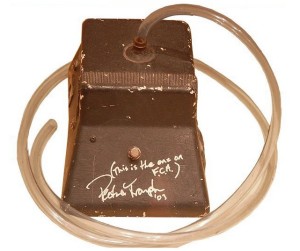 Peter Frampton began performing as a young teen. He joined hit-making pop group The Herd at age 16, and in 1969 teamed with Steve Marriott to form the hard rocking Humble Pie. His fair, delicate face and long curly locks earned him the title “the face of ’68” by the British rock press. He went on to do session work with Harry Nilsson and George Harrison before releasing his first solo album in 1972. It featured Ringo Starr and Billy Preston as guest musicians. His solo LPs made little impact until the release of “Frampton Comes Alive.” He would never again come close to achieving the level of success he reached with that classic live set. But for a brief moment in the days before disco and Styx – as we clung to the fast-fading hippie lifestyle, sporting frayed bell-bottoms and bandana halter tops in arenas clouded with reefer smoke – sweet-faced Peter was our hottest rocker.
Peter Frampton began performing as a young teen. He joined hit-making pop group The Herd at age 16, and in 1969 teamed with Steve Marriott to form the hard rocking Humble Pie. His fair, delicate face and long curly locks earned him the title “the face of ’68” by the British rock press. He went on to do session work with Harry Nilsson and George Harrison before releasing his first solo album in 1972. It featured Ringo Starr and Billy Preston as guest musicians. His solo LPs made little impact until the release of “Frampton Comes Alive.” He would never again come close to achieving the level of success he reached with that classic live set. But for a brief moment in the days before disco and Styx – as we clung to the fast-fading hippie lifestyle, sporting frayed bell-bottoms and bandana halter tops in arenas clouded with reefer smoke – sweet-faced Peter was our hottest rocker.
Here’s the 25-year-old Peter performing “Do You Feel Like We Do” on the old Midnight Special show in 1975. You can see and hear his talk box in action. I had a chance to see Frampton come alive at the 1,300-seat Palace Theater in Greensburg, PA, in 2014. He was quite personable and chatty, and invited fans to the foot of the stage to experience full frontal guitar assault. I had a perfect spot. My ears were ringing for 12 hours, that’s how good it was.
© Dana Spiardi, July 23, 2015
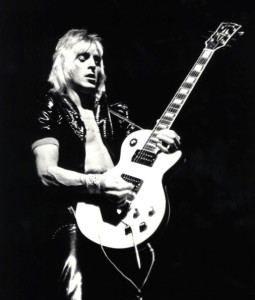 Mick was an arranger, producer, songwriter and classically-trained multi-instrumentalist who became the most recognized super guitarist of the glam rock era. Born on May 26, 1946, in northern England, he had kicked around in a number of bands for a time and was working as a city parks department gardener when he was recruited to play with Bowie on a BBC Radio 1 show in 1970. He went on to make his mark as the lead guitarist, arranger and overall driving musical force on the burgeoning superstar’s early groundbreaking albums: “The Man Who Sold the World,” “Hunky Dory,” “The Rise and Fall of Ziggy Stardust and the Spiders from Mars,” “Aladdin Sane,” and “Pin Ups.”
Mick was an arranger, producer, songwriter and classically-trained multi-instrumentalist who became the most recognized super guitarist of the glam rock era. Born on May 26, 1946, in northern England, he had kicked around in a number of bands for a time and was working as a city parks department gardener when he was recruited to play with Bowie on a BBC Radio 1 show in 1970. He went on to make his mark as the lead guitarist, arranger and overall driving musical force on the burgeoning superstar’s early groundbreaking albums: “The Man Who Sold the World,” “Hunky Dory,” “The Rise and Fall of Ziggy Stardust and the Spiders from Mars,” “Aladdin Sane,” and “Pin Ups.”
But playing in Bowie’s Spiders from Mars band required more than just musical talent. It also demanded space-alien style and a touch of daring. And it didn’t take long before the androgynous, flame-tressed “Ziggy” transformed his fair-haired guitarist into a glamorous arachnid. A performance of Bowie and his band on the BBC’s Top of the Pops in July 1972 shows the wispy singer lovingly placing his hands on Mick’s shoulders and arms while the two perform “Starman.” This was a bold move on a televised show, given the suspicious nature of the two men’s gender.
But what did Bowie care? A short time earlier he had announced his bisexuality to the U.K. music press. He would take the homo-erotica theme to a new level when he began simulating fellatio on Mick’s guitar during on-stage performances. The hetero, Mormon-raised guitarist played along like the good sport he was. His sister Maggi once told The Guardian that back home in the Yorkshire town of Hull she had to endure jeers of “Your brother’s a poof.”
“He was very much a salt-of-the-earth type, the blunt northerner with a defiantly masculine personality, so that what you got was the old-fashioned Yin and Yang thing,” Bowie said of his guitarist in 1994. “As a rock duo, I thought we were every bit as good as Mick and Keith or Axl and Slash. Ziggy and Mick were the personification of that rock n roll dualism.”
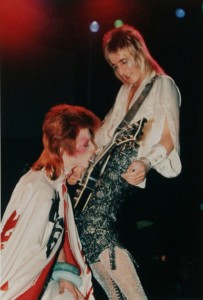 But Mr. Bowie never lingers on one planet very long, and in 1973 he parted ways with the most vital musical partner of his career. By the time of the breakup, Mick already had several independent projects under his belt; he had co-produced Lou Reed’s famous “Transformer” album in 1972, and arranged string ensembles for Pure Prairie League’s “Bustin’ Out” LP that same year. But making an impact sans a charismatic frontman proved challenging. Between 1973 and 1975 he released two unsuccessful solo albums and formed the short-lived Hunter-Ronson Band with former Mott the Hooper leader Ian Hunter. The work drew little fanfare.
But Mr. Bowie never lingers on one planet very long, and in 1973 he parted ways with the most vital musical partner of his career. By the time of the breakup, Mick already had several independent projects under his belt; he had co-produced Lou Reed’s famous “Transformer” album in 1972, and arranged string ensembles for Pure Prairie League’s “Bustin’ Out” LP that same year. But making an impact sans a charismatic frontman proved challenging. Between 1973 and 1975 he released two unsuccessful solo albums and formed the short-lived Hunter-Ronson Band with former Mott the Hooper leader Ian Hunter. The work drew little fanfare.
“The one thing that saved Mick at this point was Dylan,” Mick Ronson’s wife Suzi told Uncut magazine’s Garry Mulholland in 2013. She was referring to Mick’s invitation to join Bob Dylan’s Rolling Thunder Review, a tour featuring a roaming band of minstrel rockers that included Joan Baez, Joni Mitchell, Ramblin’ Jack Elliott, and Kinky Friedman. “That whole tour was this huge, huge adventure. A real treasure hunt,” Mick told Mulholland in 1976. “There was Joan Baez. McGuinn. Ginsberg – he’s a grand lad, is Allen. There was Dylan. And there I was, too. For a lad from Yorkshire like meself, it were truly out of this world.”
The Yorkshire lad went on to work as a producer, arranger and guitarist for Morrissey, Van Morrison, Roger McGuinn, T-Bone Burnett, John Mellencamp and many other artists. He stayed active right up till his death from liver cancer at age 46 on April 29, 1993.
David Bowie ushered in a whole new brand of performance art with his space-age song themes and colorful alter egos. And Mick Ronson took the spectacle to a whole new level with his rock-solid musicianship.
This Top of the Pops performance shows the very chummy nature of Ziggy and his spider.
Here’s Mick performing a guitar solo during a Bowie show.
©Dana Spiardi, May 26, 2015
]]>
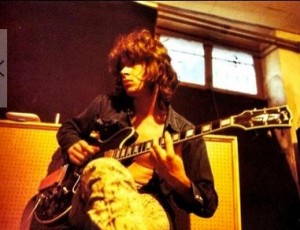 Michael Kevin Taylor epitomized the term “teenage blues.” When Rock-God-of-the-Day Eric Clapton failed to show up for a performance with John Mayall’s Bluesbreakers in 1965, young Mick approached Mayall from the audience and asked if he could “fill in.” It was a brave move for a shy boy of 16. And it paid off. Mick ended up touring and recording with the Bluesbreakers, honing his skills and catching some fire.
Michael Kevin Taylor epitomized the term “teenage blues.” When Rock-God-of-the-Day Eric Clapton failed to show up for a performance with John Mayall’s Bluesbreakers in 1965, young Mick approached Mayall from the audience and asked if he could “fill in.” It was a brave move for a shy boy of 16. And it paid off. Mick ended up touring and recording with the Bluesbreakers, honing his skills and catching some fire.
Within months of Brian Jones’s psycho-physical meltdown and eventual sacking by Jagger et al, Taylor would evolve from a blues-breaker to a stones-shaker, joining the world’s greatest rock band at the recommendation of Mayall. The man-child dubbed “Little Mick” soon found himself in the studio, providing overdubs on “Honky Tonk Women” and several tracks on the classic “Let it Bleed” LP. His first live gig with the band was on July 5, 1969, in London’s Hyde Park. This free concert was dedicated to the fragile, Byronesque Jones, whose drowning death two days earlier was officially attributed to “misadventure.”
With Taylor fully ensconced in the band, “the music changed, almost unconsciously,” said Keith Richards in his memoir Life. His smooth, lyrical guitar style was the perfect contrast to Keith’s rough and ragged approach. “We did the most brilliant stuff together, some of the most brilliant stuff the Stones ever did,” said Richards. “He had a lovely sound, some very soulful stuff.”
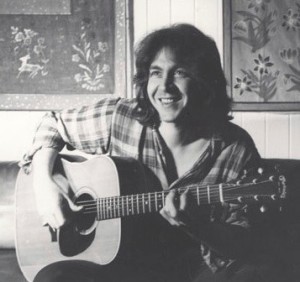 Novice fans may not realize just how big a role Mick Taylor played during the production of those seminal Stones LPs, particularly “Exile on Main Street,” which was recorded in an environment of total debauchery in the basement – an electric opium den of sorts – of an old mansion named Villa Nellcôte in the south of France. Mr. Taylor stayed the course and held his own during a chaotic period marked by Keith’s burgeoning heroin addiction.
Novice fans may not realize just how big a role Mick Taylor played during the production of those seminal Stones LPs, particularly “Exile on Main Street,” which was recorded in an environment of total debauchery in the basement – an electric opium den of sorts – of an old mansion named Villa Nellcôte in the south of France. Mr. Taylor stayed the course and held his own during a chaotic period marked by Keith’s burgeoning heroin addiction.
Mick’s days with Jagger and Richards and their ragged company began with a baptism-by-fire, and rolled at full-tilt speed till the end. The boyish-looking guitarist left the band in 1974, after five life-changing – make that life-shattering – years marked by grueling, violence-tinged gigs (Altamont in particular), drug-drenched studio sessions, and assorted mayhem and melees. He went on to make well-respected music with other bands, took part in several Stones projects through the years, and toured with the band during their 50th anniversary tour in 2013. His face-offs with Mick Sr. during the tour’s “Midnight Rambler” performances were electrifying. For many concert goes (including me) that number was the highlight of the show.
Mick Taylor stamped a signature sound onto some of the greatest recordings in rock history – and emerged a survivor of modern music’s most hedonistic era. And for that I raise a loving cup to the mega-talented, incredibly low-keyed guitarist.
Here’s Mick, at his best, on that stickiest of classic LPs! That’s the great Bobby Keys on sax.
© Dana Spiardi, Jan 17, 2015
]]>